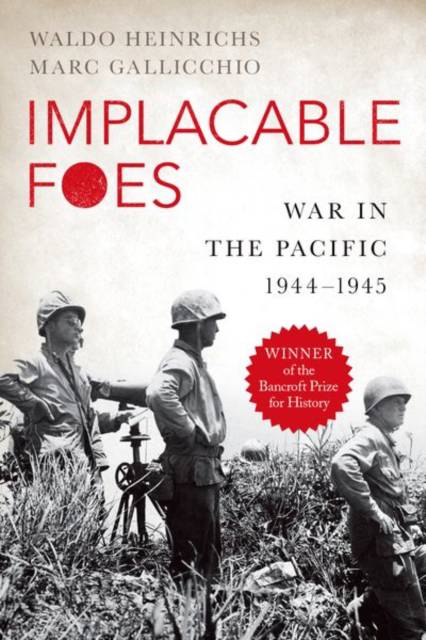
- Afhalen na 1 uur in een winkel met voorraad
- Gratis thuislevering in België vanaf € 30
- Ruim aanbod met 7 miljoen producten
- Afhalen na 1 uur in een winkel met voorraad
- Gratis thuislevering in België vanaf € 30
- Ruim aanbod met 7 miljoen producten
Zoeken
€ 38,95
+ 77 punten
Uitvoering
Omschrijving
May 8, 1945, Victory in Europe Day--shortened to "V.E. Day"--brought with it the demise of Nazi Germany. But for the Allies, the war was only half-won. Exhausted but exuberant American soldiers, ready to return home, were sent to join the fighting in the Pacific, which by the spring and summer of 1945 had turned into a grueling campaign of bloody attrition against an enemy determined to fight to the last man. Germany had surrendered unconditionally. The Japanese would clearly make the conditions of victory extraordinarily high. Following V-E Day, American citizens understandably clamored for their young men to be shipped back from Europe and longed for a return to a peacetime economy. Politics intruded upon military policy while a new and untested president struggled to control policy. The challenge of defeating the Japanese had come to seem nearly insurmountable. American casualty rates during the previous eighteen months led Army Chief of Staff General George C. Marshall to warn of the toll that "the agony of enduring battle" would likely take. General Douglas MacArthur clashed with Marshall and Admiral Chester Nimitz over strategy. Meanwhile, under pressure, the Army began a program of partial demobilization of troops in Europe, which depleted units at a time when combat-tested soldiers were most needed. In this context of military emergency, the fearsome projections of the human cost of invading the Japanese homeland, and weakening social and political will in the American homeland, seemed to make victory, unconditional or otherwise, an increasingly distant prospect. In Implacable Foes, award-winning historians Waldo Heinrichs and Marc Gallicchio bring to life the final year and a half of World War II in the Pacific, combining grand strategy and ground-level account, taking readers from the island-hopping campaigns in the spring of 1944--New Guinea to the Philippines to Okinawa and Iwo Jima--right up to the dropping of the atomic bombs over Hiroshima and Nagasaki in August 1945. Heinrichs and Gallicchio reveal more fully than ever before not only the Japanese policies of desperate defense, but also the sometimes rancorous debates on the home front, and in the process deliver a gripping battle narrative integrated with a provocative and revisionist discussion of American decision-making. The result is a masterful work of military history, one that illuminates both the calculus of global war and the incalculable part played by individual sacrifice.
Specificaties
Betrokkenen
- Auteur(s):
- Uitgeverij:
Inhoud
- Aantal bladzijden:
- 728
- Taal:
- Engels
Eigenschappen
- Productcode (EAN):
- 9780190931520
- Verschijningsdatum:
- 1/06/2019
- Uitvoering:
- Paperback
- Formaat:
- Trade paperback (VS)
- Afmetingen:
- 150 mm x 226 mm
- Gewicht:
- 907 g

Alleen bij Standaard Boekhandel
+ 77 punten op je klantenkaart van Standaard Boekhandel
Beoordelingen
We publiceren alleen reviews die voldoen aan de voorwaarden voor reviews. Bekijk onze voorwaarden voor reviews.











